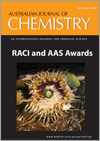
Australian Journal of Chemistry
Volume 70 Number 11 2017
RACI and AAS Awards (2016/2017)
This special issue of the Journal presents papers authored by RACI and AAS award winners from 2016 and 2017.
CH17391Synthesis of Star Polymers by RAFT Polymerization as Versatile Nanoparticles for Biomedical Applications
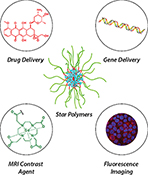
Synthesis of star polymers using reversible addition–fragmentation chain transfer (RAFT) polymerization through core-first and arm-first preparation are outlined. Biomedical applications of the resulting star polymers in controlled delivery of chemotherapeutic agents, protein inhibitors, signalling molecules, siRNA, and in constructing macromolecular magnetic resonance imaging (MRI) contrast agents and fluorescent imaging agents, and theranostic vectors are discussed.
CH17215Photoactive and Physical Properties of an Azobenzene-Containing Coordination Framework
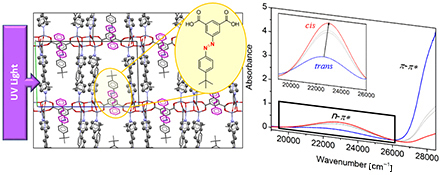
A new porous 3-dimensional coordination framework containing the novel photoactive ligand 5-((4-tert-butyl)phenylazo)isophthalic acid displays light-dependent spectroscopic properties.
CH17173Reactions of Trivalent Iodine Reagents with Classic Iridium and Rhodium Complexes

The reactions of classic iridium and rhodium complexes with iodine(iii) oxidants are described. All reactions resulted in two-electron oxidation. Ligand exchange and anion scrambling were observed in monodentate ligand-containing complexes. In the case of reacting Iiii reagents with chelating ligand-containing complexes, no scrambling was observed, leading to the isolation of well-defined complexes.
CH17257Methanal Extrusion in ipso-Substitution Reactions of Hydroxymethylindoles
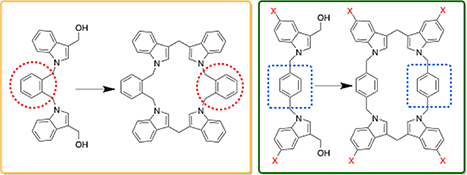
A range of 3-hydroxymethylindoles undergo acid-catalysed reactions involving ipso-electrophilic substitution with the extrusion of methanal and the formation of diindolylmethane moieties. Both inter- and intramolecular processes lead to macrocyclic compounds.
CH17264Synthesis of Imine and Amine-Linked Macrocycles Containing Tris-Indoles
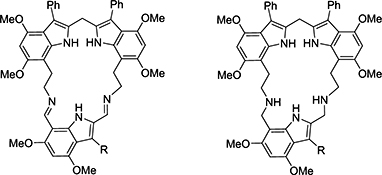
The synthesis of 21-membered imine- and amine-linked tris-indole macrocycles starting from 7-nitroethylindoles is described.
CH17380Application of Hole-Transporting Materials as the Interlayer in Graphene Oxide/Single-Wall Carbon Nanotube Silicon Heterojunction Solar Cells
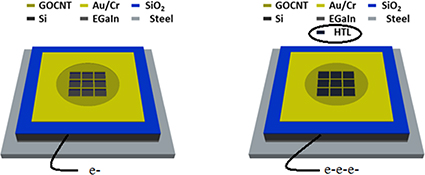
New hole-transport materials have been applied in silicon–carbon nanotube solar cells to yield better performance.
CH17363Laser-Based Formation of Copper Nanoparticles in Aqueous Solution: Optical Properties, Particle Size Distributions, and Formation Kinetics
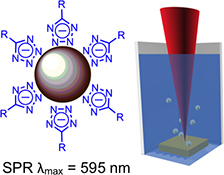
The formation of copper nanoparticles (CuNPs) in the presence of N-donor ligands results in changes in the nanoparticle optical properties and particle size distributions, depending on the nature of the donor ligands. CuNP formation kinetics are independent of the nature of the donor ligand.
CH17440Internal Energy Deposition in Dielectric Barrier Discharge Ionization is Significantly Lower than in Direct Analysis in Real-Time Mass Spectrometry
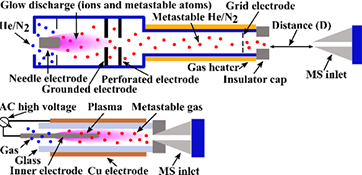
Portable dielectric barrier discharge ionization is a plasma-based ion source for mass spectrometry that is significantly ‘softer’ than the two most widely used plasma-based ionization sources. This is important for the detection of intact molecules with thermolabile bonds, such as many explosives, and some chemical weapons and organic pollutants.
CH17335Redox-State Dependent Spectroscopic Properties of Porous Organic Polymers Containing Furan, Thiophene, and Selenophene
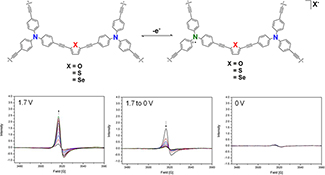
Redox-active porous organic polymers with heterocyclic linkers (furan, thiophene, and selenophene) have been synthesised and their electronic and spectroscopic properties investigated as a function of redox state. Through the use of electron paramagnetic resonance spectroelectrochemistry, it was found that the distinct redox states in these polymers could be reversibly accessed.
CH17335 Abstract | CH17335 Full Text | CH17335PDF (1000 KB) | CH17335Supplementary Material (1.1 MB)
CH17228The Use of Imaging Mass Spectrometry to Study Peptide Toxin Distribution in Australian Sea Anemones
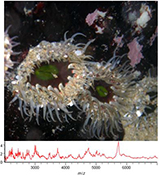
Peptide toxins from sea anemones may provide valuable drug leads. However, little is known about peptide toxin distribution in discrete morphological regions in sea anemones, which perform distinct biological functions. We utilise imaging mass spectrometry to examine peptide distribution in the Australian sea anemone, Oulactis muscosa, and infer biological function.



